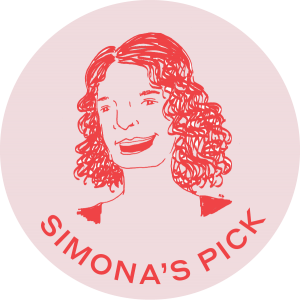Deatra Cohen and Adam Siegel add a new dimension to our picture of everyday life in the Pale of Settlement with a highly readable portrayal of folk healers, herbs, and medicinal practices. Ashkenazi Herbalism offers not only the first botanical description of Jewish plant and herb use in Eastern Europe from the eighteenth into the early twentieth-century, but also so much more.
Part I presents these two librarians’ discoveries about Jewish formal and folk medical practice in the part of the Russia Empire that is now Ukraine, a subject rarely documented in print during that time or after. Through archival photographs from the An-Sky expeditions, a botanical field study undertaken by the Soviet government (which included, but never acknowledged, Jews), memoirs, and interviews with descendants, the authors found documentation that counter misconceptions of shtetl backwardness and illiteracy. Their book details types of male health practitioners over three centuries — the ba’alei shem (itinerant Kabbalists), trained physicians, feldsher (military barber-surgeons), and healers — along with their education and the medical handbooks they referenced. They identify two published remedy books written by Jews in the 1700s and report, as more evidence of literacy, that two classic European guides were translated into Hebrew and Yiddish and housed on shelves in pharmacies, where both Jews and non-Jews gathered to share information.
Religious doctrine, citing the important Jewish mitzvahs of saving a life and tikkun olam allowed for secular medical treatments in those days, although written charms to thwart “the evil eye” might also be interwoven. It was a world of men, where births of females were not even registered. However, finding descriptions of a midwife at work in the “only published memoir of a woman from the Pale of Settlement,” helped Cohen and Siegel make their case for the presence of competent, respected female healers, too. The historical background on regional healers they present in Part I works hand-in-hand with their detailed description of the healing properties of specific plants in the materia medica that follows, the centerpiece of Ashkenazi Herbalism.
Cohen and Siegel begin Part II with a caveat that information in Materia Medica is to be used only for historical and ethnographic purposes, not as a practical guide. In fact, they provide only one recipe (from the past and without proportions), but in this section the authors describe the characteristics, locations, parts of the plant used, and the multiple healing uses of twenty-six herbs identified as essential. With personality, they revisit and fit into place people and source names from the more scholarly first section.
Individual plant entries, some running ten pages, begin with beautiful line drawings by Cohen. The cataloguing of everyday ailments is captivating: white clover to stop postnatal hemorrhage; stinging nettle stalks rubbed on aching bodies for colds and rheumatism; nutmeg for sexual concerns and diarrhea; plantain as a gargle for influenza; and strawberries for kidney disease and whooping cough. This materia medica is an encyclopedia of a specific time in and of itself. Local non-Jewish treatments contrast those by Ashkenazi Jews, which often mention specific towns. The authors identify plants with Latin names and common names in English, Hebrew, Yiddish, and in five languages spoken by non-Jewish neighbors.
By following clues about Jewish herbal medicine where few existed and presenting what they found so professionally, Cohen and Siegel have designed an engaging new reference. Ashkenazi Herbalism not only answers the question “What did Jews have from the Old Country to keep themselves resilient besides chicken soup?” — but forges new footpaths toward questions that still need to be answered.
Sharon Elswit, author of The Jewish Story Finder and a school librarian for forty years in NYC, now resides in San Francisco, where she shares tales aloud in a local JCC preschool and volunteers with 826 Valencia to help students write their own stories and poems.


